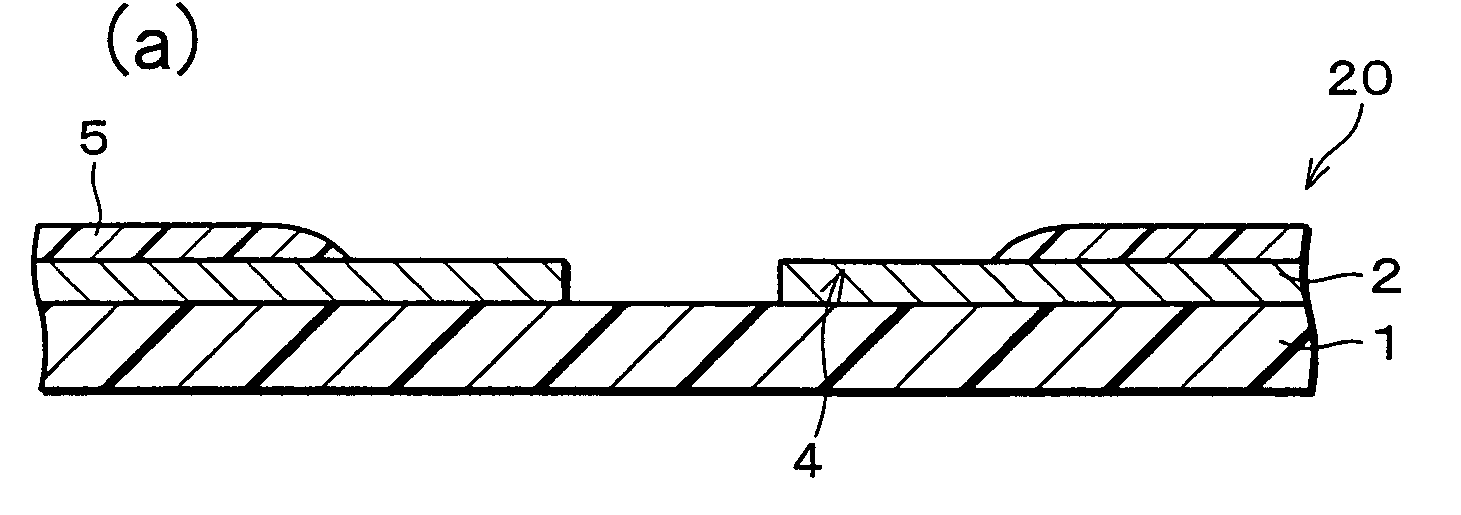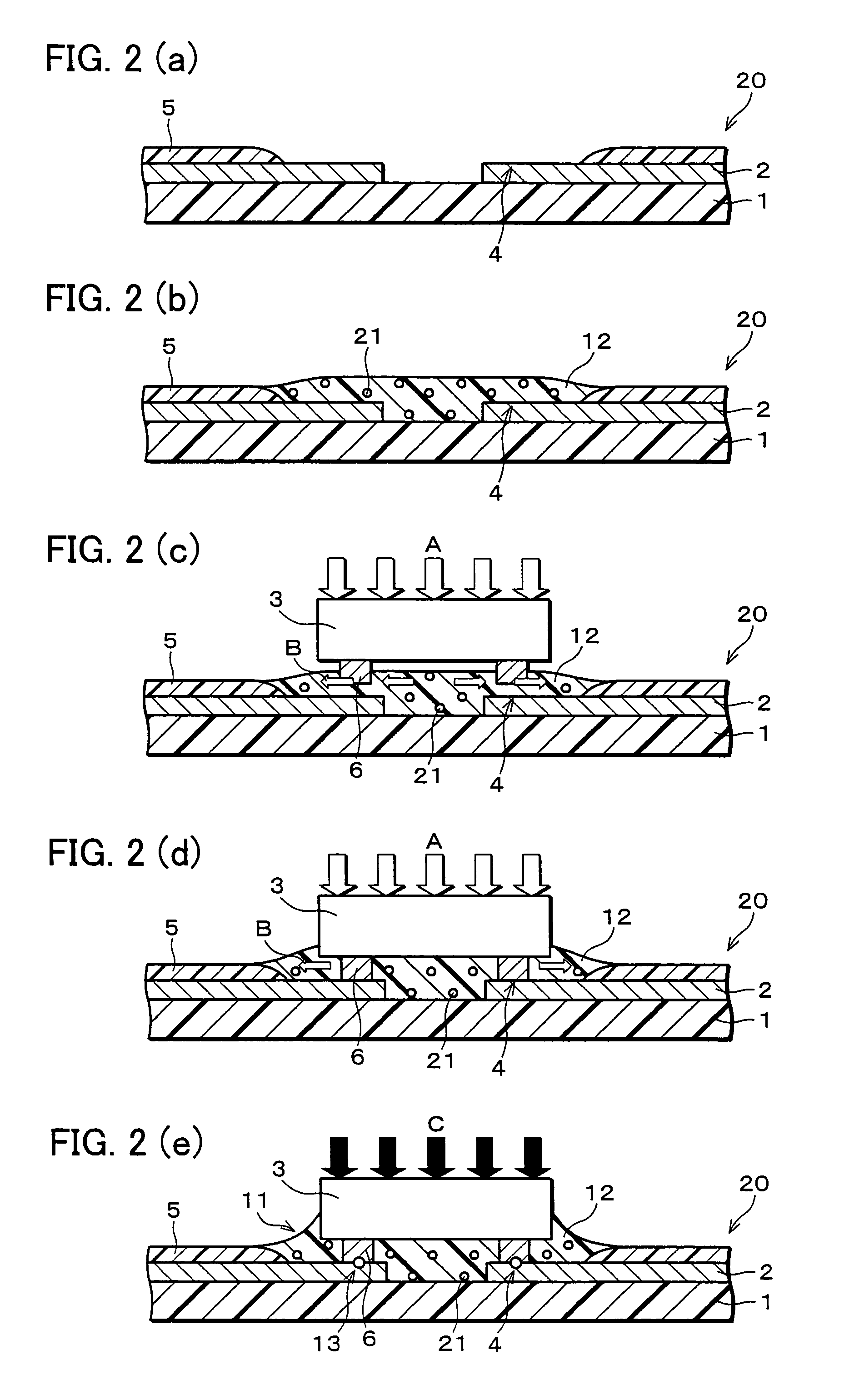Semiconductor device and fabrication process thereof
a technology of semiconductor devices and fabrication processes, applied in semiconductor devices, semiconductor/solid-state device details, electrical devices, etc., can solve the problems of poor strength, poor inability to qualify for resin sealing techniques in prior art techniques, so as to improve strength and reliability of resin sealing, prevent fabrication problems, and improve performance and quality
- Summary
- Abstract
- Description
- Claims
- Application Information
AI Technical Summary
Benefits of technology
Problems solved by technology
Method used
Image
Examples
first embodiment
[0029]One embodiment of the present invention is described below with reference to FIG. 1(a) through FIG. 1(e). It should be noted that the present invention is not limited by the following descriptions.
[0030]A semiconductor device of the present invention includes an interconnection pattern formed on an insulating substrate. A semiconductor element is electrically connected to the interconnection pattern via projecting electrodes. A resin layer and a resin fillet are formed around the semiconductor element and between the semiconductor element and the insulating substrate. In the semiconductor device of the present invention according to this configuration, the resin fillet is formed using an insulating resin containing a resin anti-repellent for adjusting wettability of the insulating resin.
[0031]More specifically, as shown in FIG. 1(e), the semiconductor device of the present embodiment includes a circuit board 20, a semiconductor element 3, and a resin fillet 11, among other com...
second embodiment
[0074]The following describes another embodiment of the present invention with reference to FIG. 2(a) through FIG. 2(e). It should be appreciated that the present invention is not limited by the following descriptions. For simplicity, elements having the same functions as those already described in the First Embodiment are given the same reference numerals and explanations thereof are omitted here.
[0075]In the First Embodiment, the resin fillet 11 is produced from the insulating resin 7 containing a resin anti-repellent. In the Second Embodiment, however, the resin fillet 11 is produced from an insulating resin 12 containing conductive particles 21 dispersed in the insulating resin 12, in addition to a resin anti-repellent, as shown in FIG. 2(e).
[0076]By the conductive particles 21 dispersed in the insulating resin 12 forming the resin fillet 11, the projecting electrodes 6 of the semiconductor element 3 and the contacts 4 of the interconnection pattern 2 on the insulating tape 1 ca...
PUM
 Login to View More
Login to View More Abstract
Description
Claims
Application Information
 Login to View More
Login to View More - R&D
- Intellectual Property
- Life Sciences
- Materials
- Tech Scout
- Unparalleled Data Quality
- Higher Quality Content
- 60% Fewer Hallucinations
Browse by: Latest US Patents, China's latest patents, Technical Efficacy Thesaurus, Application Domain, Technology Topic, Popular Technical Reports.
© 2025 PatSnap. All rights reserved.Legal|Privacy policy|Modern Slavery Act Transparency Statement|Sitemap|About US| Contact US: help@patsnap.com



